Intermezzo

Intermezzo (Zolpidem) Addiction: Side Effects, Detox, Withdrawal, and Treatment

Table of contents
- What is Intermezzo (Zolpidem)?
- Intermezzo vs. Ambien: What’s the Difference?
- Slang for Intermezzo
- How Common Is Intermezzo (Zolpidem) Addiction and Abuse?
- What Are the Side Effects of Intermezzo (Zolpidem) Abuse?
- What Are the Signs of Zolpidem Addiction and Abuse?
- Intermezzo (Zolpidem) Withdrawal Symptoms and Detox
- Intermezzo Withdrawal Timeline
- Treatment for Intermezzo Addiction
- Inpatient Drug Rehab vs. Outpatient Drug Rehab for Intermezzo Addiction
- Continued Care Options for Intermezzo Addiction Treatment
What is Intermezzo (Zolpidem)?
Intermezzo is a brand name for the generic drug zolpidem. It is a prescription sleep aid drug that is classified as a sedative-hypnotic.1 It works by increasing the effects of the brain neurotransmitter GABA and producing feelings of relaxation and drowsiness.
Unlike some other sleep-aid medications, Intermezzo can be taken in the middle of the night. It is ideal for people who wake up before they intend to and have difficulty falling back asleep on their own. However, it should not be taken in the middle of the night if the user has less than four hours of bedtime remaining before they wake.
Zolpidem is intended for short-term treatment of insomnia. When used as prescribed, it makes users feel calm and relaxed, which helps to induce sleep. However, due to the pleasant feelings it causes, Intermezzo can also be habit-forming and may cause dependence and addiction, especially if a person uses it for longer than prescribed.
Intermezzo sublingual tablets are designed to be dissolved under the tongue, not swallowed whole. The effects set in quickly to help users fall back asleep after waking. The recommended maximum Intermezzo dose for women is 1.75 mg and 3.5 mg for men.2 It should only be taken when needed, which may not necessarily be every single night.
People who are prescribed Intermezzo for insomnia should not take this drug with any other central nervous system depressants, such as opioids, benzodiazepines, antidepressants, alcohol, or other zolpidem products like Ambien. Doing so could increase a person’s risk for overdose or severe depression of the central nervous system.
Intermezzo was discontinued in the United States, but other zolpidem products are still available for the treatment of insomnia.
Intermezzo vs. Ambien: What’s the Difference?
Intermezzo and Ambien both contain the same active ingredient, zolpidem tartrate, but the two drugs are slightly different. Intermezzo is a low-dose, faster-acting form of the drug zolpidem and it is taken as a sublingual tablet that dissolves under the tongue. In contrast, Ambien takes longer to work and is a film-covered tablet.3
Slang for Intermezzo
The following terms are street names or slang for sleep-aid drugs like zolpidem and Intermezzo:4
- A-
- Zombie pills
How Common Is Intermezzo (Zolpidem) Addiction and Abuse?
According to the 2018 National Survey on Drug Use and Health, an estimated 6.4 million people ages 12 or older misused prescription sedatives and tranquilizers like zolpidem. That’s 2.4 percent of the U.S. population.5
Zolpidem is a Schedule IV drug, which means it has the potential for misuse and may cause dependence or addiction.6 Since it can be addictive, a doctor may not prescribe Intermezzo to someone who has had previous problems with illegal drug abuse or prescription drug abuse.
Although zolpidem is less addictive than other drugs, such as opioids, the risk is still there and it often increases the longer a person uses Intermezzo. Many people who abuse Intermezzo have prior substance abuse problems. Abusing this drug with other drugs or alcohol can greatly increase the likelihood that a person will become addicted.
Although misuse of sleep aid drugs is common, the best way to prevent Intermezzo addiction is to take the drug as prescribed by a doctor and only use it when it’s needed. If you have struggled with substance abuse in the past, you may want to consider alternative forms of treatment for insomnia.
What Are the Side Effects of Intermezzo (Zolpidem) Abuse?
Some of the outward signs of Intermezzo abuse may include:
- Extreme sleepiness and drowsiness during the day
- Poor judgment
- Difficulty walking
- Coordination problems
- Memory problems
- Slurred speech
- Worsening anxiety or depression
What Are the Signs of Zolpidem Addiction and Abuse?
If you believe that you or a loved one is abusing Intermezzo, some of the common signs include:
- Being unable to fall asleep without Intermezzo
- Taking larger doses of Intermezzo than what was prescribed
- Taking Intermezzo longer than intended
- Taking Intermezzo without a valid prescription
- Taking Intermezzo with other drugs or alcohol
- “Losing” Intermezzo prescriptions
- Faking symptoms to get Intermezzo
- “Doctor shopping” or seeing multiple doctors to get Intermezzo prescriptions
Signs of zolpidem addiction or dependence may also include:
- Wanting to cut back on Intermezzo use but being unable
- Needing larger or more frequent doses of Intermezzo to feel the same effects
- Spending a lot of time getting Intermezzo, using it, or recovering from Intermezzo use
- Continuing to abuse Intermezzo even when it causes problems in relationships
- Continuing to use Intermezzo even when it results in physical danger to oneself or others
- Experiencing withdrawal symptoms when the effects of Intermezzo wear off
Intermezzo (Zolpidem) Withdrawal Symptoms and Detox
Withdrawal symptoms are a sure sign that a person is physically dependent on a drug and the discomfort can make it very difficult to stop using. Intermezzo withdrawal symptoms often include:7
- A general feeling of being unwell
- Lightheadedness
- Abdominal cramps
- Muscle cramps
- Nausea and vomiting
- Sweating
- Tremors
- Convulsions
- Fatigue
- Panic attack
- Nervousness
You are much more likely to experience these withdrawal symptoms if you stop using Intermezzo very abruptly. For this reason, it is highly recommended that people who are addicted to Intermezzo get professional help to detox.
Medical detox programs take place in a safe, sober, clinical environment. The duration of a detox program will vary from person to person but can last anywhere from two to seven days, or longer if necessary. During treatment, clinical and medical care are provided to help reduce the severity of withdrawal symptoms, provide treatment for any co-occurring psychological issues, and prevent relapse.
Quitting Intermezzo cold turkey may seem like the easiest way to kick your drug habit, but it could actually be very dangerous or even life-threatening. Instead, a medical team of detox experts can help make detox and withdrawal more comfortable, safe, and effective.
Intermezzo Withdrawal Timeline
The duration and intensity of Intermezzo withdrawal symptoms will vary depending on the person, as well as factors like:
- How long they used Intermezzo
- Their typical dosage
- How frequently they used Intermezzo
- Their overall health condition
- The extent of their tolerance and dependence
Some individuals with a less severe Intermezzo dependence may only experience mild withdrawal symptoms for a few days, while those with severe addictions may experience severe withdrawal symptoms that linger for weeks.
Intermezzo withdrawal is different for everyone, but here is a general timeline of symptoms and when they can be expected.
| 24 hours after the last dose | Early Intermezzo withdrawal symptoms are generally mild and may include headaches and confusion. |
| 1 to 2 days after the last dose | During this time, you may experience what is known as “rebound symptoms” which can include insomnia. |
| 3 to 7 days after the last dose | Intermezzo withdrawal symptoms generally peak around this time and can be quite severe. Symptoms may include abdominal and muscle cramps, nausea, and vomiting, sweating, tremors, convulsions, fatigue, nervousness, or panic attacks. |
| 2 to 4 weeks after the last dose | Intermezzo withdrawal symptoms will start to subside, although some people will experience lingering psychological symptoms like depression, anxiety, or insomnia for several weeks or months following zolpidem detox. |
Treatment for Intermezzo Addiction
Addiction treatment for Intermezzo addiction should be highly personalized to be effective, especially if you have a history of prior substance abuse problems. If you also have mental health issues, it’s essential that your zolpidem treatment program also addresses these in addition to your physical and psychological addiction.
After zolpidem detox is complete, you may find that continuing your treatment with professional care is the best way to receive support and gain the tools you need to stay sober. A long-term zolpidem rehab program for Intermezzo addiction can provide adequate time to heal physically and emotionally while you work to gain valuable life skills, relapse prevention tools, and unearth the root causes of your addiction with behavioral therapy.
There are many benefits to enrolling in a long-term rehab program and according to the National Institute on Drug Abuse (NIDA), research shows the longer a person stays in treatment, the more likely they are to achieve positive results in sobriety. Any treatment that lasts less than 90 days will have limited effectiveness.8
During zolpidem rehab, clients participate in a wide range of evidence-based treatments for addiction, such as:
- Group counseling
- Individual counseling
- Family counseling/workshops
- Educational lectures
- 12-Step Program, SMART Recovery, or similar recovery meetings
- Group exercise
- Life skills development
- Music therapy
- Art therapy
These individual aspects of a zolpidem treatment program all work together to form a personalized, comprehensive rehab program that addresses many different contributing factors that may have lead to your addiction. This type of whole-person approach to zolpidem rehab is ideal because instead of focusing on the addiction itself, your treatment team can help you learn how to deal with difficult situations without using zolpidem, finally face the lies you’ve been telling yourself, and make positive life changes that will lead to permanent change.
Inpatient Drug Rehab vs. Outpatient Drug Rehab for Intermezzo Addiction
There are several different types of zolpidem rehab programs but inpatient rehab and outpatient rehab are two of the most common. The chart below offers a quick comparison between the two. If you’re heading to rehab for Intermezzo addiction, an addiction treatment specialist can help you determine which type of Intermezzo rehab program is right for you based on your needs and circumstances. You don’t have to make that decision alone.
| In residential rehab, clients: Live at the rehab center in gender-specific housing Are required to maintain a structured daily schedule Attend daily counseling sessions (individual counseling, family counseling, and/or group counseling) Participate in recovery-oriented group activities (on and off-site) Have immediate access to treatment professionals and medical care on-site | In outpatient rehab, clients: Attend a series of group outpatient sessions at a clinical location Live at home or in a sober living home while enrolled in IOP Complete homework assignments outside of IOP sessions Maintain personal responsibilities while enrolled in treatment, such as employment or school |
For many people, the addiction treatment process plays out in a series of episodes and each one addresses their ongoing current needs in recovery for a fluid, individualized process. This often includes a combination of Intermezzo treatment programs including medical detox, inpatient rehab, IOP, sober living, and aftercare or personal monitoring.
When it comes down to it, the longer you stay in an Intermezzo treatment program, the more likely you are to remain sober. Unfortunately, sometimes cost can be a barrier, but most addiction treatment providers offer payment options that can help reduce the financial burden of Intermezzo rehab, such as exploring the following payment options:
- Health insurance benefits
- Employee Assistance Programs (EAP)
- Financed healthcare loans
- Personal loans from family or friends
- Healthcare credit cards
- Crowdfunding
- HSA funds
- Scholarships or grants
Continued Care Options for Intermezzo Addiction Treatment
After you complete inpatient and/or outpatient addiction treatment for Intermezzo addiction, you may choose to continue receiving sobriety support services in the form of a sober living program and/or an aftercare program. Both options are excellent ways to stay actively engaged and committed in the early stages of recovery.
Sober Living Programs
A sober living program is ideal for someone who has recently completed zolpidem detox or rehab and is looking for recovery support and a stable living environment. Sober homes offer sober, gender-specific, and safe housing for men and women in all stages of recovery. They come in many different shapes and sizes and are located in towns and cities all over the United States.
Sober living programs don’t just provide housing. Many also offer recovery support services, such as:
- Peer recovery support
- Regular drug and alcohol testing
- Individualized recovery programming
- Educational planning
- Employment assistance
- Volunteer placement
The cost of sober living programs varies depending on the home’s amenities, its location, recovery support services offered, and more.
Aftercare Programs
Aftercare programs are also ideal for people who have recently completed rehab, people who are struggling to stay sober, or individuals who are facing challenging life circumstances and need help staying sober.
Aftercare consists of a series of weekly outpatient meetings hosted in a clinical setting. They are designed to be a safe and accepting place for all clients and an open environment where individuals can discuss the challenges they are facing in recovery.
This type of treatment is highly beneficial for people who have an established life in recovery, as it can provide essential peer support, learning opportunities, and clinical care in an accepting environment.
If you’re addicted to Intermezzo or a similar zolpidem sleep aid drug, you don’t have to keep living this way. There are so many different addiction treatment options and we can help you find a program that works best for you. Call (888) 343-1967 to speak with a representative at Nova Recovery Center today.
References:
- https://www.drugs.com/intermezzo.html
- https://www.drugs.com/dosage/intermezzo.html
- https://abcnews.go.com/Health/intermezzo-promises-middle-night-insomniacs/story?id=16074353
- https://medlineplus.gov/ency/patientinstructions/000798.htm
- https://www.deadiversion.usdoj.gov/schedules/orangebook/c_cs_alpha.pdf
- https://www.samhsa.gov/data/sites/default/files/cbhsq-reports/NSDUHNationalFindingsReport2018/NSDUHNationalFindingsReport2018.pdf
- https://www.rxlist.com/intermezzo-drug.htm#warnings
- https://www.drugabuse.gov/publications/teaching-packets/understanding-drug-abuse-addiction/section-iii/6-duration-treatment
Nova Recovery Center offers a large range of substance abuse treatment services: detox, residential, outpatient and sober living.
Treatment Options
Treatment Locations
Call Us Now and Begin Healing at (512) 605-2955
Or text us and we will call you right back.
Not quite ready for a call? You can fill out the form below.
What Makes Us Different
- Gender-specific treatment
- Evidenced-based treatment
- 12-Step immersion
- 90-day residential treatment
- Family program
- Full continuum of care
- Insurance and private pay
100% Confidential Guarantee
Confidential Consultation
Nova Recovery Center is dedicated to helping you or your loved one get help. Please call or fill out this form for a confidential consultation.
One of our understanding, dedicated advisors will contact you about your options. Begin healing today.
Nova Recovery Center is dedicated to helping you or your loved one get help. Please call or fill out this form for a confidential consultation. One of our understanding, dedicated advisors will contact you about your options. Begin healing today.





